
Seborrheic dermatitis isn’t just stubborn dandruff. It’s a chronic skin condition that causes oily, flaky patches on your scalp, eyebrows, nose, and ears - often with redness and itching that won’t go away no matter how much you wash. If you’ve tried every anti-dandruff shampoo and still see flakes clinging to your shoulders, you’re not alone. About half of all adults deal with this at some point, and while it’s not contagious or dangerous, it can be frustrating, embarrassing, and persistent.
What’s Really Going On Under Your Scalp?
Most people think dandruff is just dry skin. But seborrheic dermatitis is driven by a tiny yeast called Malassezia. This fungus lives naturally on everyone’s skin, feeding off the oil your sebaceous glands produce. When it overgrows - often due to genetics, stress, or cold weather - it triggers an immune response. Your skin cells start multiplying too fast, and instead of shedding normally, they clump together into visible, greasy scales. This isn’t a hygiene issue. You can wash your hair daily and still have flare-ups. The problem isn’t dirt. It’s inflammation caused by yeast byproducts irritating your scalp. That’s why regular shampoo doesn’t work. You need something that targets the yeast and calms the reaction.What Does It Look Like?
On the scalp, you’ll see:- White or yellowish, greasy flakes (not dry, powdery ones)
- Red, irritated patches under the flakes
- Itching that gets worse after sweating or in cold weather
- Flaking that doesn’t improve with regular shampoo
Why It Gets Worse in Winter
Cold, dry air strips moisture from your skin and reduces sunlight exposure. Sunlight naturally helps control Malassezia growth. Without it, flare-ups become more common. About 65% of people notice worse symptoms during winter. Stress, fatigue, and heavy alcohol use also make it worse. People with Parkinson’s disease are 4-5 times more likely to develop it, likely due to changes in skin oil production and immune response.The Right Medicated Shampoos (And How to Use Them)
Not all dandruff shampoos are created equal. You need active ingredients that actually fight yeast and reduce inflammation. Here’s what works, based on clinical evidence and real-world use:| Active Ingredient | How It Works | Best For | Typical Concentration |
|---|---|---|---|
| Ketoconazole | Strong antifungal that kills Malassezia yeast | Moderate to severe flaking | 2% |
| Zinc Pyrithione | Antifungal and anti-inflammatory, gentle on hair | Mild cases, daily use | 1-2% |
| Selenium Sulfide | Slows skin cell turnover and reduces yeast | Thick, stubborn scales | 2.5% |
| Coal Tar | Slows skin cell growth and reduces scaling | Chronic cases, maintenance | 0.5-5% |
| Salicylic Acid | Exfoliates dead skin, helps other ingredients penetrate | Flaky, crusty buildup | 1.8-3% |
| Ciclopirox | Antifungal and anti-inflammatory | Resistant cases, prescription | 1% |
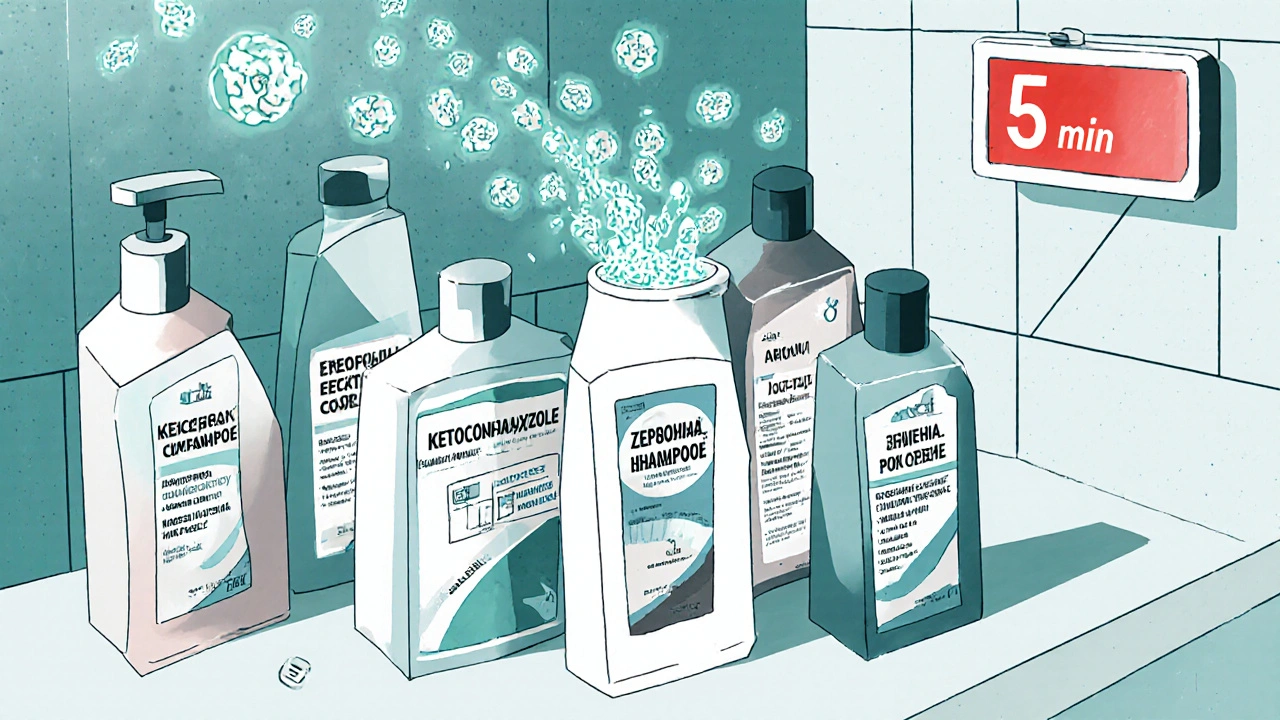
How to Use These Shampoos Correctly
Just lathering and rinsing won’t cut it. These shampoos need time to work:- Wet your scalp thoroughly.
- Apply a coin-sized amount directly to the affected areas.
- Massage gently - don’t scrub hard.
- Leave it on for 5 to 10 minutes. Set a timer.
- Rinse completely.
What If One Shampoo Stops Working?
It happens. Many people find that after a few months, their favorite shampoo loses its power. That’s normal. Malassezia can adapt, and your skin’s response changes. The solution? Rotate. Use one shampoo for 2-3 weeks, then switch to another with a different active ingredient. For example:- Monday: Ketoconazole
- Wednesday: Zinc Pyrithione
- Friday: Coal Tar
When to Add a Topical Steroid
If your scalp is red, swollen, or burning badly, you might need a short-term boost. Over-the-counter hydrocortisone cream (0.5% or 1%) can calm inflammation quickly. Apply a thin layer to the affected scalp area once a day for no more than 7-10 days. Don’t use it long-term - it can thin your skin or cause rebound flares. For facial areas like the beard or eyebrows, some people get relief just by shaving. About 37% of men with beard seborrheic dermatitis see improvement after removing facial hair and using antifungal washes.What Doesn’t Work (And What to Avoid)
- Regular shampoos - even “anti-dandruff” ones without proven actives - won’t touch the yeast. - Scalp scrubs or harsh brushes - they irritate the skin and make inflammation worse. - Essential oils or apple cider vinegar rinses - no solid evidence they help, and they can sting or trigger reactions. - Stopping treatment when it looks better - this is the #1 reason it comes back.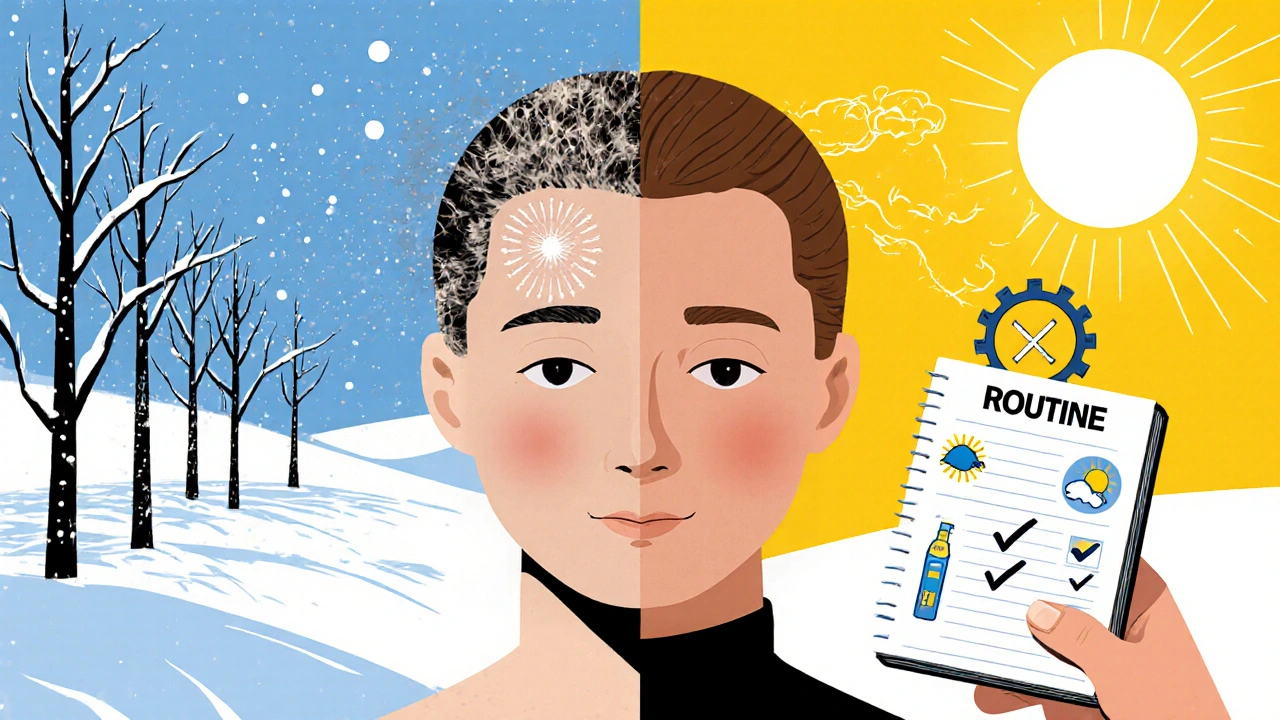
Side Effects and How to Manage Them
Medicated shampoos can dry out your hair. About 41% of users report this. To counter it:- Use a lightweight, fragrance-free conditioner only on the ends, not the scalp.
- Avoid heat styling tools during active treatment.
- Try a leave-in moisturizing spray with ceramides or squalane.
Long-Term Management Is the Key
There’s no cure for seborrheic dermatitis. But it’s completely manageable. Think of it like high blood pressure - you don’t cure it, you control it. The goal isn’t to eliminate the yeast entirely (you can’t). It’s to keep it in check so it doesn’t trigger flares. Stick to your routine even when your scalp looks fine. Skip treatments for a few weeks? Flakes will return. Consistency beats intensity.When to See a Dermatologist
See a specialist if:- OTC shampoos don’t help after 6-8 weeks
- Flaking spreads to your face, ears, or chest
- Your scalp bleeds, oozes, or becomes very painful
- You’re using steroids for more than 10 days at a time
Final Tip: Track Your Triggers
Keep a simple journal for a month. Note:- When flares happen
- What you were stressed about
- Weather changes
- New hair products
Is seborrheic dermatitis the same as dandruff?
Dandruff is a mild form of seborrheic dermatitis. Both involve flaking, but seborrheic dermatitis includes redness, greasy scales, and can affect other oily areas like the face and chest. Dandruff usually stays on the scalp and is less inflamed.
Can stress cause seborrheic dermatitis?
Stress doesn’t cause it, but it’s one of the top triggers for flare-ups. About 60% of people report worsening symptoms during high-stress periods. Managing stress won’t cure it, but it can help keep flares under control.
How long does it take to see results from medicated shampoos?
Most people notice improvement in 2-4 weeks with consistent use. Some see results in as little as 7 days. But full control usually takes 6-12 weeks of trial, rotation, and adjustment.
Can I use medicated shampoo every day?
Yes, during the initial treatment phase. Daily use is recommended until flakes are gone. Once controlled, switch to 1-2 times per week for maintenance. Daily use long-term can dry out your hair, so rotate formulas or reduce frequency as your scalp improves.
Does sunlight help seborrheic dermatitis?
Yes. Sunlight, especially UVB rays, helps suppress Malassezia yeast growth. Many people notice their scalp improves in summer. That’s why flare-ups are common in winter. Moderate sun exposure (10-15 minutes a few times a week) can help, but don’t burn your skin.
Are natural remedies like tea tree oil effective?
Some small studies suggest tea tree oil may help, but the evidence isn’t strong or consistent. It can irritate sensitive skin and isn’t regulated like medicated shampoos. Stick with proven ingredients like ketoconazole or zinc pyrithione unless your dermatologist recommends otherwise.
Will I have seborrheic dermatitis forever?
It’s a lifelong condition with cycles of flare-ups and remission. But with the right routine, you can keep it under control for months or even years at a time. It doesn’t mean you’ll always have flakes - just that you need to stay consistent with treatment.

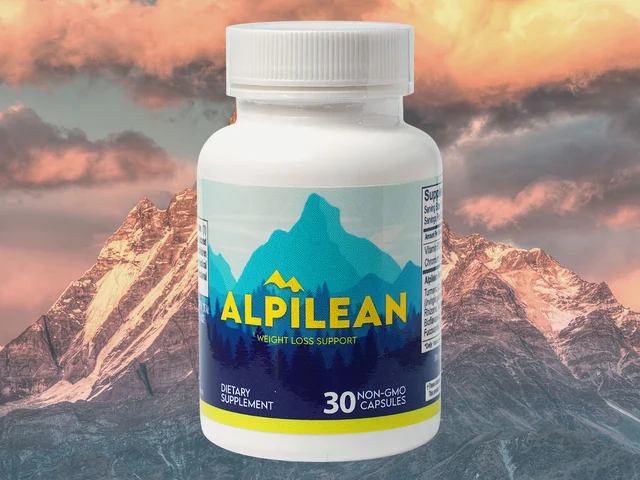
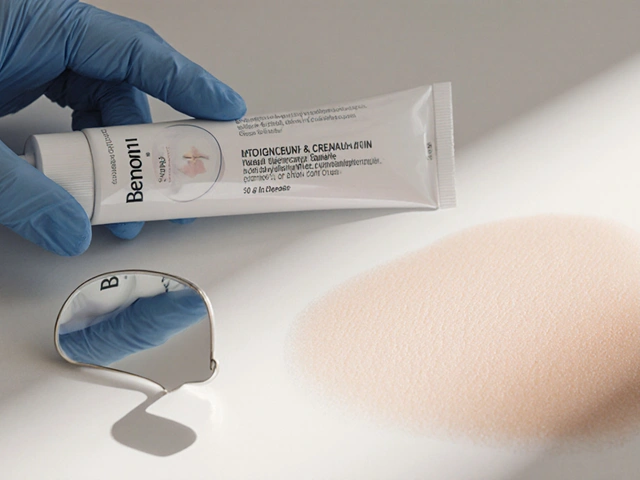
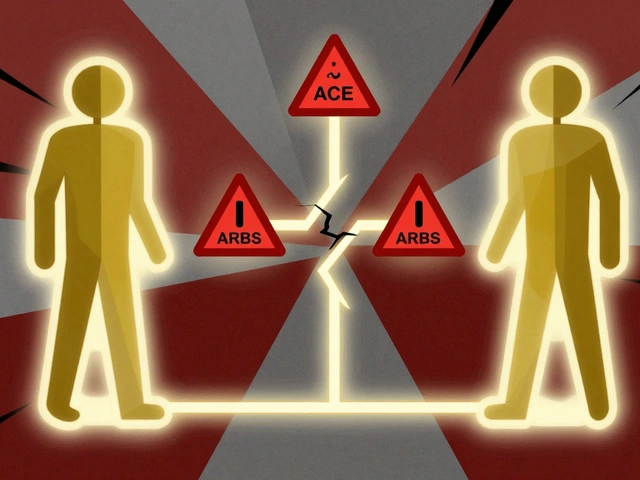
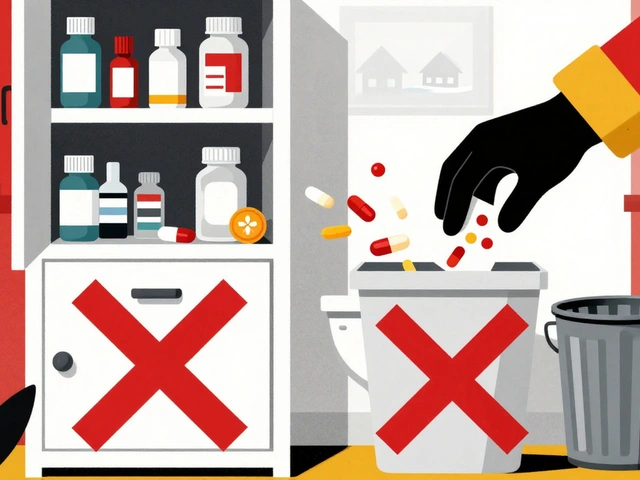
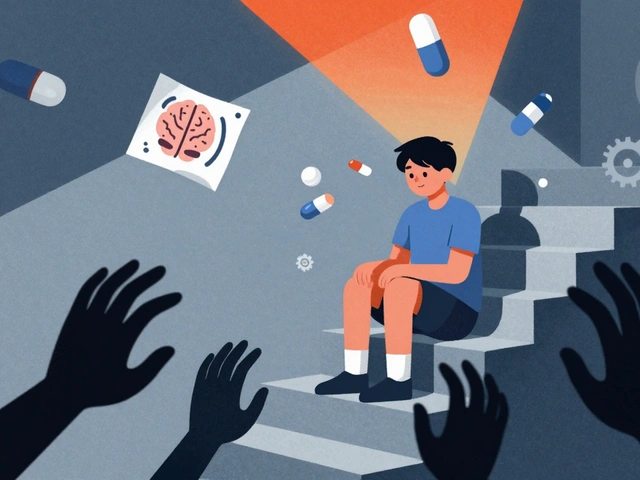
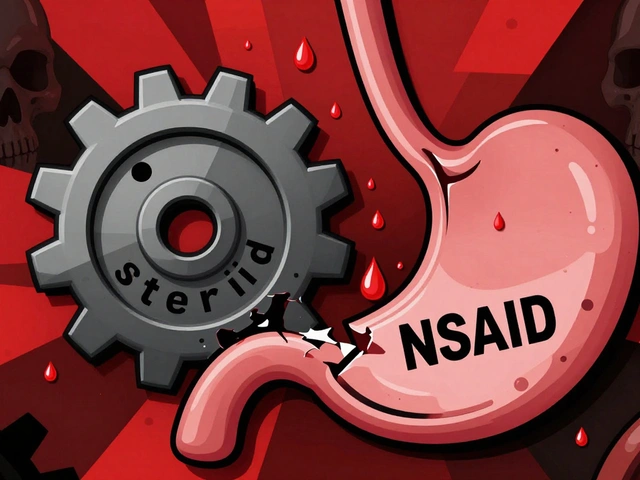

13 Comments
I’ve been dealing with this for years, and honestly? Ketoconazole saved my life. I used to have flakes on my black turtlenecks like I was a walking snow globe. After 3 weeks of using Nizoral twice a week, my scalp just… stopped screaming at me. No more itching during Zoom calls. I don’t even wash my hair daily anymore.
Just remember: leave it on for the full 10 minutes. I used to rinse it out like a regular shampoo and wondered why nothing changed. Duh.
Y’all are overcomplicating this. Just use Head & Shoulders. Done. I don’t know why you’re wasting money on fancy shampoos. It’s just dandruff. Get over it. My grandpa used to rub lard on his scalp and he lived to 92. Maybe you need less science and more common sense. Also, stop being so sensitive about your scalp. It’s not a damn art project.
OMG YES. I tried EVERYTHING. Tea tree oil? Burned my scalp like I’d dipped it in hot sauce. Apple cider vinegar? Smelled like a kombucha brewery exploded. Then I found the ketoconazole stuff at the drugstore for $12 and now I feel like a new person. My husband said I stopped looking like I had a bad case of dandruff after a party. I cried. Not joking.
Also-coal tar smells like a gas station threw up. Don’t say I didn’t warn you.
Great breakdown. I especially appreciate the rotation advice-I didn’t realize the yeast could build tolerance. I was using zinc pyrithione every day for months and it stopped working. Switched to selenium sulfide for two weeks, then back to zinc, and now I’m stable. No more flaking on my collar.
Also, the tip about not using conditioner on the scalp? Lifesaver. I used to slather it on like I was moisturizing my whole head. Rookie mistake.
I’ve had this since college. It flares every time I get stressed or the weather turns cold. I used to think it was my fault-like I wasn’t washing enough. Turns out, it’s biology. The fact that this post explains it’s not about hygiene? Huge relief.
Still use ketoconazole twice a week. No drama. Just quiet control.
Thank you for this comprehensive guide. As a medical professional from India, I see this condition frequently. Many patients self-medicate with steroids or herbal concoctions, leading to rebound flares. The key is consistency and avoiding aggressive scrubbing. The rotation strategy you suggest is clinically sound.
Also, sunlight exposure is underutilized. Even 10 minutes of morning sun on the scalp can make a measurable difference. I recommend this to all my patients with seasonal flare-ups.
Just to clarify: Malassezia is not a bacteria. It’s a lipophilic yeast. That’s why antibacterial products don’t work. This distinction matters because so many people waste time and money on the wrong treatments. The science here is solid. I appreciate the clinical accuracy in this post.
Also, the part about Parkinson’s patients having a 4-5x higher incidence? That’s not widely known. Good inclusion.
Ugh. So you’re telling me I’ve been fighting my own scalp for years because I didn’t know about ‘yeast’? Like, I thought it was just bad hygiene. And now you want me to pay $15 for a shampoo that smells like diesel? And you say I can’t use tea tree oil? What about my holistic lifestyle? What about my crystals? What about the fact that I only use ‘clean beauty’ products?
Sorry, I’m not buying it. This feels like Big Pharma selling me a problem I didn’t know I had.
MY SCALP HAS BEEN THROUGH A WAR. I’ve tried everything: garlic paste, vinegar rinses, coconut oil massages, even a spiritual cleansing with sage (don’t judge me). I cried in the shower last winter because flakes were falling like confetti at a funeral.
Then I tried ketoconazole. I left it on for 10 minutes. I didn’t rush. I didn’t panic. I just… waited. And then-silence. No itching. No flakes. No more embarrassing shoulder stains.
I’m not just cured. I’m reborn. I can wear black again. I can hug people without fear. I can live.
This is the most overblown, pseudo-medical nonsense I’ve seen on Reddit. You’re telling people to use ‘medicated shampoos’ like they’re pharmaceuticals? It’s dandruff. It’s not a disease. You’re pathologizing normal skin. The yeast is everywhere. Everyone has it. You’re scaring people into buying overpriced bottles of shampoo. Wake up. It’s not that serious.
Also, ‘challenges’? You mean ‘a little flaking’? Please.
As someone from South Africa, I’ve seen this condition manifest differently in our climate-especially in urban areas with high pollution and low humidity. The yeast thrives in oily, stagnant environments. What’s fascinating is how stress amplifies it, not just biologically, but sociologically. In high-pressure work cultures, flare-ups spike.
One anecdote: my cousin, a Johannesburg banker, stopped getting flares after he started meditating daily. Not because of the shampoo. Because he stopped being terrified of everything.
It’s not just skin. It’s soul.
Bro, this is gold. I tried everything, even my aunt’s ayurvedic paste made of neem and turmeric. It stained my pillow like a crime scene. Then I found the zinc pyrithione shampoo-$8 at the local pharmacy. Left it on for 10 mins like u said. Flakes gone in 2 weeks. Now I use it once a week. No more itching during meetings. My boss asked if I got a new haircut.
PS: coal tar smells like a diesel truck had a baby with a tire fire. Avoid.
Thank you for sharing this with such clarity. As someone who has coached many individuals through chronic skin issues, I can confirm: consistency is the real hero here. Many give up too soon because they expect overnight results. But this condition is not a sprint-it’s a lifelong rhythm.
Also, the rotation strategy is brilliant. It mirrors how we manage antibiotic resistance in medicine. The human body adapts. So we must adapt too. Keep this knowledge alive. You’ve helped more people than you know.